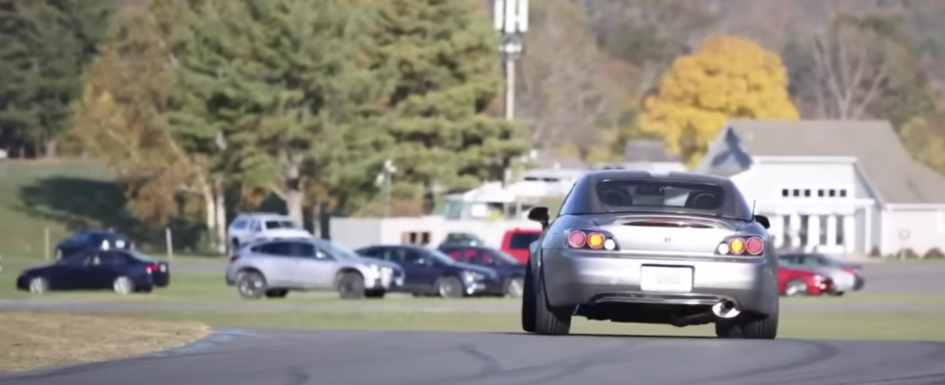All contests of speed involve making use of (and enjoying the feeling of) g-forces. Different types of vehicles create those forces in different ways; airplanes rely on jet thrust and aerodynamic forces, motor boats rely on turbine thrust and displacement of water, and cars rely on the grip generated by the tires. For any performance driver, understanding how tires work is critical to our ability to extract and use the maximum forces they have to offer.
Understanding slip angle
“Slip angle” may be one of the most misunderstood terms in performance driving. Here are some things that slip angle is NOT:
- Slip angle is not drifting
- Slip angle is not oversteer
- Slip angle is not a measure of yaw or rotation
- Slip angle is not even a measure of how much a tire is sliding
Slip angle is simply the difference between the direction a tire is pointed and the direction it is going. Contrary to popular belief, this difference between where a tire is pointed and where it is going is not because the tire is sliding (or “slipping”) by some amount; it is because of the twisting of the tire around the contact patch. I wish “slip angle” was called “twist angle”… that alone would alleviate a lot of the confusion.
Terminology aside, it is definitely worth deeply understanding the nuances of slip angles. This video explains the concept exceptionally well, and does so in a very easy to understand and intuitive way. I highly recommend taking the 16 minutes to watch it.
Going a little bit deeper
If you have the appetite for a more mathematical analysis of slip angles and the mechanics of tire dynamics, here are a couple of posts by Juan Manzanero, an aerospace engineer who is passionate about motorsport, vehicle dynamics, and optimal control. His name may not be one you know or recognize, but his work and analysis have caught the attention of some of the titans of the sport.
- Car and tire dynamics at the limits of handling (Part I) – In Part 1, he introduces some of the key ideas of tire dynamics and grip by utilizing the (relatively simpler) examples of acceleration and braking, and introduces some of the equations that describe the observed behavior.
- Car and tire dynamics at the limits of handling (Part II) – In part 2, he takes some same concept and equations and adapts them to explain lateral grip, and explores how chassis slip angles and chassis angular rate affect the slip angles at the front and rear of the car in neutral, understeer, and oversteer situations.
How slip angle relates to actual tire sliding
Let’s drive home the point made above and discussed in the video as well as the 2 articles. Despite the name, when a tire has some “slip angle”, it does not mean that the tire is sliding across the pavement. Slip angle just refers to the difference between the direction the tire is pointed and the direction it is traveling in. As long as we are comfortably below the slip angle where peak grip occurs, there is no sliding of the tire across the pavement.
But what happens when the slip angle approaches the point where the tire makes peak grip? What happens when the slip angle goes beyond the point of making peak grip?
That is when the tire slides! It is only when the slip angle starts approaching the point where the tire makes peak grip does the tire begin to slide just a tiny bit as it makes peak grip. And it isn’t until we go past the slip angle where peak grip is made that the tire slides across the pavement more perceptibly. It is only when the tire is actually sliding across the pavement that the angular difference between where the tire is pointed and where it is going is comprised of the angle of twist of the contact patch AND the angle created by the slide.
If your tire makes peak grip at 6 degrees of slip angle (twist), it will only slide perceptibly when you try to induce more than 6 degrees of twist in the tire. If your tire makes peak grip at 10 degrees of slip angle (twist), it will only slide perceptibly when you try to induce more than 10 degrees of twist in the tire.
To some, this may go against what you’ve heard and how you’ve talked about slip angles. To others, this may seem obvious. So many of the explanations out there about slip angles, while well intentioned, are ultimately wrong or misguided, so I hope these resources make this important concept clearer.
The next step is figuring out how to apply this understanding to make us faster on track.
More on that soon.

